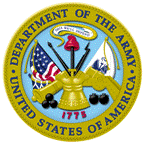U.S. Department of Defense
Document Type
Article
Date of this Version
2011
Citation
FROM: Leadership in Dangerous Situations : A Handbook for the Armed Forces, Emergency Services, and First Responders. Edited by Patrick J. Sweeney, Michael D. Matthews, and Paul B. Lester (Annapolis: Naval Institute Press, 2011).
Abstract
By early 2008 in the Iraq War, the positive effects of the U.S. "surge" had started to become visible in the streets of Baghdad, as shops began to reopen and people again filled the streets.1 Despite these outwardly positive appearances, a sinister undercurrent flowed through the population. Rumors ran rampant in Iraqi military and government circles that the radical cleric Muqtada al-Sadr's Mahdi Army was about to launch an offensive against the government of Prime Minister Nuri al-Maliki, a fellow Shiite, because of Sadr's unhappiness with his waning political influence.
In the neighborhood of Zafaraniyah, in Baghdad's southeastern quadrant, Sadrist fighters started to make trouble. The unit responsible for Zafaraniyah had been trained by its commander to act with a great deal of restraint in order to avoid unnecessary civilian deaths. This was in keeping with guidance issued by General David Petraeus, commanding general of the Multi-National Forces-Iraq. The success or failure of Petraeus' strategy of limiting civilian deaths depended solely on the support of the Iraqi people and their perceptions of American and Iraqi forces. What Petraeus was attempting to do on a large scale was to change the organizational culture of both forces. The events of February and March 2008 would put Petraeus' vision and strategy to the test and offer evidence of what happens when old ways of doing business compete with the new.
On the second night of what would come to be called "the uprising," a fight erupted between a dozen young Sadrist fighters and a platoon of American and Iraqi soldiers in the most troubled neighborhood in Zafaraniyah. The engaged platoon was well trained, had the situation well in hand, and acted with restraint. What unfolded was a textbook example of the tendency of higher headquarters to use available technological innovations regardless of the logic (or illogic) of doing so and in contravention of a subordinate commander's wishes.
The battalion watch officer, or "battle captain," ran from the tactical operations center (TOC) to the battalion commander's office to notify him of the firefight. The battle captain explained that the brigade headquarters wanted to drop a SOD-pound bomb from an F/A-18 Super Hornet onto the house where it was believed that twelve or so fighters had gone to make a last stand. The brigade TOC was watching the house from several miles away via a live camera feed from an aerial drone.
Rushing to the TOC the battalion commander attempted to call off the strike. "For God's sake-our job here is to protect the Iraqi people! It's the first sentence in our f--g mission statement! And you want to drop a damned bomb on someone's house?!"
Every soldier in the TOC broke eye contact. They knew they were wrong. Their error: they got caught up in viewing the action as nothing more than a video game. They failed to assess whether dropping a bomb on an Iraqi house was consistent with the commander's intent to exercise restraint and minimize civilian casualties.
Within minutes, the battalion commander was on his way to the scene of the fighting to assess the situation. Almost immediately, he heard the boom of a Hellfire missile striking its target to the east of the commander's location, followed by the staccato report of a string of 30mm shells from the helicopter's main gun. Several minutes later, the commander found the platoon. The two small units and the Iraqi soldiers began fighting their way deep into the neighborhood to find the target house. It appeared that the missile strike had taken the spirit out of the enemy fighters, and friendly forces surrounded the house. They found surprisingly little damage. Fortunately, the Apache helicopter had fired a newly developed missile, specifically designed to limit destruction in urban terrain. Nonetheless, there was still collateral damage to other houses and pools of blood on the ground, along with bloody Iraqi National Police uniforms.


Comments
US government work